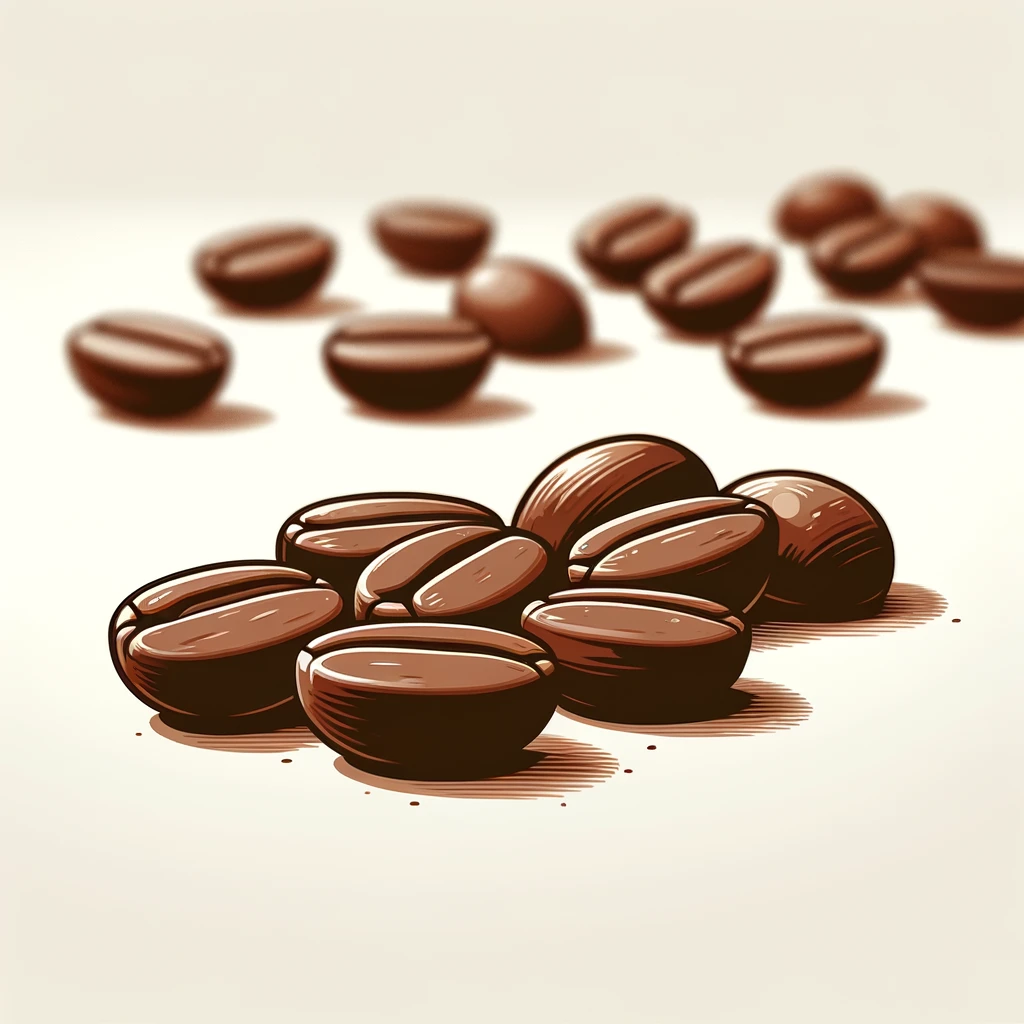
Understanding Nitro Cold Brew
Nitro cold brew is a trendy coffee beverage that’s infused with nitrogen gas, resulting in a creamy, smooth texture. The process involves steeping coarsely ground coffee beans in cold water for an extended period, typically 12-24 hours. After brewing, the coffee is stored in a keg or canister and infused with nitrogen through a pressurized valve before being served on tap. This infusion creates tiny bubbles, giving the drink a velvety mouthfeel similar to stout beer.
Nitro cold brew offers a unique sensory experience due to its foamy head and rich flavor profile. It has surged in popularity for its naturally sweet taste without added sugar or milk. The nitro infusion enhances the aromatic compounds of the coffee, providing an indulgent aroma that complements its smooth texture.
What Sets Espresso Apart
Espresso is a concentrated form of coffee made by forcing hot water through finely-ground coffee beans at high pressure. Unlike traditional brewed coffee which uses gravity to pull water through grounds over time, espresso machines use pressure to achieve this result quickly — usually within 25-30 seconds. The rapid extraction process produces a small but potent shot of intense flavors topped with crema (a golden-brown foam).
Espresso distinguishes itself from other brewing methods due to its strong flavor profile and versatility as it serves as the foundation for various popular drinks like lattes, cappuccinos, macchiatos, and more. Its concentrated nature makes it ideal for those seeking bold flavors or needing an energy boost without consuming large volumes of liquid.
Strength Comparison
Caffeine Content
When comparing nitro cold brew and espresso, it’s essential to consider the caffeine content. Nitro cold brew typically has a higher caffeine concentration than regular iced coffee due to its longer brewing process, which results in a stronger and more potent drink. On the other hand, espresso is known for its intense caffeine kick because of the amount of ground coffee used and the pressure applied during extraction.
Nitro cold brew contains approximately 200 milligrams of caffeine per 12-ounce serving, while a single shot of espresso (1 ounce) contains around 63 milligrams. This stark difference in caffeine content can greatly influence one’s choice between the two beverages based on their desired level of alertness or stimulation.
Brewing Process Impact
The difference in brewing processes also contributes to the varying strengths of nitro cold brew and espresso. Nitro cold brew is made by steeping coarsely ground coffee beans in water at a cool temperature for an extended period before infusing it with nitrogen gas using a pressurized valve system. Conversely, espresso is brewed through forcing hot water through finely-ground compacted coffee under high pressure for a short duration.
The prolonged exposure to water during nitro cold brew preparation allows for greater extraction of flavor compounds and results in a smoother taste with heightened strength compared to traditional methods like drip brewing. Meanwhile, the rapid extraction process involved in making espresso yields an intense and concentrated beverage that boasts rich flavors as well as elevated levels of caffeine.
Flavor Profile Differences
Taste and Texture
The flavor profiles differ significantly. Nitro cold brew is known for its smooth, mellow taste with a subtle sweetness and chocolatey undertones. On the other hand, espresso boasts a bold, intense flavor that can be described as rich, robust, and sometimes bitter. In terms of texture, nitro cold brew has a silky mouthfeel due to its nitrogen infusion, while espresso offers a thicker consistency with a crema layer on top.
Nitro cold brew’s distinct flavors are achieved through the slow steeping process in cold water over an extended period. This method extracts fewer acidic compounds from the coffee beans compared to traditional brewing methods like espresso, resulting in a smoother taste profile.
Espresso’s concentrated flavors are derived from the pressure-based extraction process using finely ground coffee beans. The high-pressure brewing method allows for maximum extraction of oils and soluble components from the coffee grounds, resulting in an intense and flavorful shot of espresso.
Impact of Coffee Origin
The origin of the coffee beans used also plays a significant role in differentiating nitro cold brew from espresso in terms of flavor profile. For instance, single-origin coffee beans used in nitro cold brew may offer nuanced fruity or floral notes depending on their growing region – such as Ethiopian Yirgacheffe providing hints of blueberry or jasmine.
In contrast, when preparing espresso using blends or single-origin beans with bolder characteristics like Sumatra Mandheling or Brazilian Santos, consumers can expect strong earthy tones or nutty flavors that contribute to its distinctive taste.
Brewing Methods Explored
Nitro Cold Brew Technique
Nitro cold brew is a brewing method that involves steeping coarsely ground coffee in cold water for an extended period. This slow extraction process results in a smooth, low-acid coffee concentrate. Once the brewing is complete, the cold brew is infused with nitrogen gas and stored in a keg at high pressure. When served, it’s pushed through a tap with a restrictor plate to create tiny bubbles, giving it a creamy texture similar to draft beer.
The nitro cold brew technique offers several advantages. Firstly, the slow extraction process brings out the natural sweetness of the coffee beans while reducing bitterness and acidity. The infusion of nitrogen creates a velvety mouthfeel and enhances the overall drinking experience.
Espresso Extraction Process
Espresso is created using finely ground coffee packed into a portafilter and subjected to hot pressurized water for around 25-30 seconds. This rapid extraction method produces small but potent shots of concentrated coffee known as espresso. The intense pressure extracts oils from the coffee grounds quickly, resulting in rich flavors and crema -a layer of foam on top of each shot.
The espresso extraction process provides unique benefits compared to other brewing methods. It delivers bold flavors and aromas due to its quick extraction under high pressure which captures more complex compounds from the beans.
Temperature and Serving Styles
Cold Brew Chill
Nitro cold brew is typically served chilled, making it a refreshing option for warm weather or as a pick-me-up on a hot day. The brewing process involves steeping coffee grounds in cold water for an extended period, usually 12-24 hours. This slow extraction results in a smooth, mellow flavor with lower acidity compared to traditional hot-brewed coffee.
The serving style of nitro cold brew involves infusing the beverage with nitrogen gas, creating a creamy texture and cascade effect when poured from a tap. The addition of nitrogen gives the drink a velvety mouthfeel without the need for dairy or sweeteners, appealing to those seeking a dairy-free or low-calorie alternative.
Espresso Heat
On the other hand, espresso is brewed using hot water forced through finely-ground coffee beans at high pressure. This method produces a concentrated shot of coffee known for its bold flavor profile and rich crema layer on top. Due to its intense taste and higher caffeine content per ounce than regular brewed coffee, espresso is often consumed in smaller quantities.
Espresso-based drinks like lattes and cappuccinos are commonly served piping hot and can be enjoyed straight up or mixed with steamed milk for added creaminess. The heat from these beverages makes them especially popular during colder months or as an energy boost on early mornings.
Size and Serving Variations
Nitro Cold Brew Presentation
Nitro cold brew is typically served in larger sizes compared to traditional iced coffee. The drink is often presented in 12-ounce or 16-ounce cups, allowing for a more generous serving that lasts longer. The larger size also accommodates the addition of nitrogen, which creates a creamy texture and enhances the overall drinking experience.
Nitro cold brew’s serving variations cater to those seeking a more substantial caffeine boost without compromising on flavor or smoothness. This presentation appeals to individuals looking for a refreshing yet potent pick-me-up during their day.
Espresso Serving Size
Espresso, on the other hand, is known for its compact and concentrated form. A standard espresso shot measures just 1 ounce, making it significantly smaller than nitro cold brew servings. This small size reflects the intense flavor and high caffeine concentration packed into each shot.
Espresso’s serving variations are designed for those who prefer a quick but powerful dose of caffeine. It caters to individuals seeking an efficient energy boost without consuming large quantities of liquid.
Palatability of Black Coffee
Nitro Smoothness
Nitro cold brew is known for its smoothness due to the nitrogen infusion, which creates a creamy texture. The tiny nitrogen bubbles give the coffee a velvety mouthfeel, making it feel like you’re drinking a glass of stout beer. This smoothness reduces the bitterness often associated with black coffee, providing a milder and more enjoyable flavor profile.
Nitro cold brew’s smoothness can be attributed to its low acidity. The slow steeping process used in creating nitro cold brew results in a coffee that’s less acidic than traditional hot-brewed coffee or espresso. As such, it tends to be easier on the stomach and has a less harsh aftertaste.
Espresso Boldness
On the other hand, espresso is renowned for its bold and intense flavor profile. It’s concentrated and rich in taste due to the high-pressure brewing method used to make it. The fine grind size of ground coffee beans, along with pressurized water passing through them, extracts all the flavors from the beans, resulting in an intense shot of pure caffeine goodness.
Espresso’s boldness comes from its high concentration of dissolved solids per ounce compared to other brewing methods like drip or French press. This means that every sip packs quite a punch.
True Cold Brew Nitro Differentiation
The Nitrogen Effect
Nitro cold brew and espresso are both popular coffee options, but they differ significantly in their preparation. One key differentiator is the use of nitrogen in nitro cold brew. When infused with nitrogen, the coffee develops a creamy texture and a frothy head, creating a unique drinking experience. This process gives nitro cold brew its smooth, velvety mouthfeel that sets it apart from traditional iced coffee or espresso.
Nitrogen’s influence on nitro cold brew also impacts its flavor profile. By adding nitrogen to the mix, the coffee becomes less acidic and has a sweeter taste compared to regular iced coffee or espresso. This makes nitro cold brew an appealing option for those who prefer a smoother, milder flavor without sacrificing caffeine content.
Unique Characteristics
In contrast to nitro cold brew’s infusion with nitrogen, espresso stands out due to its concentrated nature. It is made by forcing hot water through finely-ground coffee beans at high pressure, resulting in a small but potent shot of richly flavored liquid. Unlike nitro cold brew’s creamy texture and mild sweetness, espresso offers an intense flavor profile that captures the essence of the roasted beans.
Another distinguishing factor is serving size – while nitro cold brew often comes in larger servings due to its dilution with ice or water before being infused with nitrogen gas for dispensing from kegs or cans; espressos are typically served as single shots measuring just one ounce (30ml) each.
Preferences of Coffee Drinkers
Comparing Drinkers’ Choices
Coffee drinkers have distinct preferences. Some prefer the smooth, velvety texture and slightly sweet taste of nitro cold brew, while others lean towards the intense flavor and boldness of espresso. The choice often depends on personal preference and the desired caffeine kick.
Nitro cold brew enthusiasts appreciate its creamy mouthfeel, which is achieved through the infusion of nitrogen gas. On the other hand, espresso aficionados savor the concentrated essence extracted from finely ground coffee beans under high pressure.
For those who enjoy a refreshing and mellow coffee experience, nitro cold brew stands out as an appealing option. Its subtle sweetness and low acidity make it an ideal choice for individuals seeking a more laid-back caffeinated beverage. Conversely, lovers of strong, robust flavors may find themselves drawn to the potent punch that only a well-crafted shot of espresso can deliver.
Exploring Coffee Trends
In recent years, there has been a surge in popularity for both nitro cold brew and espresso-based drinks. Many cafes now offer variations such as nitro lattes or flavored espressos to cater to diverse tastes among coffee drinkers.
The rise in demand for innovative coffee drinks reflects consumers’ evolving palates and their willingness to explore beyond traditional options like regular brewed coffee. This shift illustrates a growing appreciation for unique textures, flavors, and brewing techniques that enhance the overall drinking experience.
Frequently Asked Questions
Is nitro cold brew stronger than espresso?
Nitro cold brew has a higher caffeine content per ounce compared to espresso, but since it’s typically served in larger quantities, the overall caffeine intake may vary. So, if you’re looking for a quick punch of energy, espresso might still be your best shot.
What are the main flavor profile differences between nitro cold brew and espresso?
Nitro cold brew tends to have a smoother, less acidic taste with subtle chocolatey or nutty notes due to its longer brewing process. On the other hand, espresso boasts a bold and intense flavor with prominent bitter and sweet undertones.
How does the brewing method differ between nitro cold brew and espresso?
Espresso is brewed by forcing hot water through finely-ground coffee beans under high pressure. In contrast, nitro cold brew involves steeping coarsely ground coffee in cool water for an extended period before infusing it with nitrogen gas using a keg system.
Can I enjoy both nitro cold brew and espresso at different temperatures and serving styles?
Absolutely! Nitro cold brew is often served chilled from a tap system while maintaining its creamy texture thanks to nitrogen infusion. Meanwhile, espresso can be enjoyed as is or mixed into various hot or iced beverages for that extra kick.
Are there any size variations when it comes to serving nitro cold brew and espresso?
Certainly! Espresso shots come in small servings of about 1 ounce whereas nitro cold brew can be found in various sizes ranging from 8 ounces up to even larger pint-sized servings depending on where you order your fix!
Which type of coffee drinker would prefer black coffee like nitro cold brew or traditional brewed black coffee over milk-based options?
Black-coffee enthusiasts who appreciate pure flavors without dilution tend to favor both nitro-cold-brew aficionados as well as those who savor the robustness of traditionally brewed black coffee sans any dairy additives.



